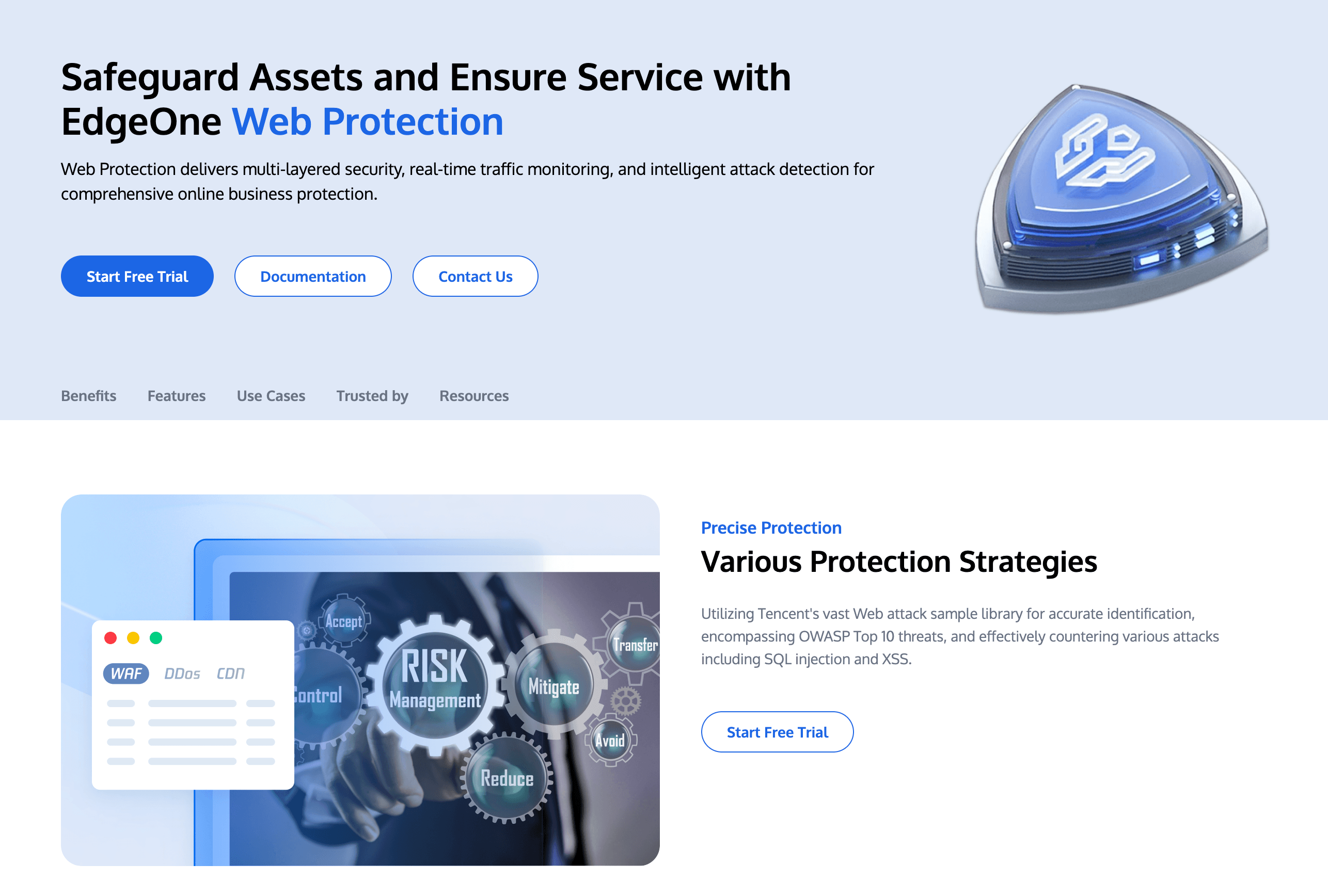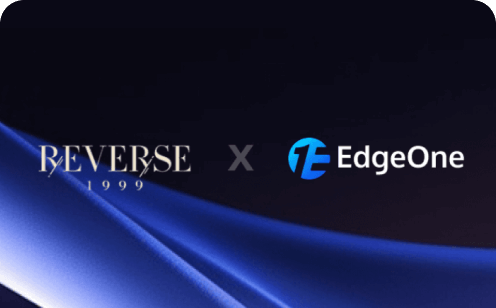Top 10 Best Web Application Firewalls (WAF) in 2025: Comprehensive Review
In today's digital landscape, web applications are the backbone of modern business operations, providing essential services and customer interactions. However, these applications are also prime targets for cyberattacks, ranging from simple defacements to sophisticated data breaches. Web Application Firewalls (WAFs) have emerged as a crucial line of defense against such threats, protecting web applications from vulnerabilities and attacks like SQL injection, cross-site scripting (XSS), and DDoS attacks. This article will provide a comprehensive review of the top 10 best WAFs in 2025, highlighting their features, deployment methods, and benefits to help you decide to secure your web applications.

What is a WAF?
A Web Application Firewall (WAF) is a specialized security solution designed to protect web applications by filtering and monitoring HTTP and HTTPS traffic between a web application and the Internet. Unlike traditional firewalls that focus on network-level attacks, WAFs are specifically tailored to protect web applications by inspecting HTTP requests and responses. They work by analyzing traffic for malicious patterns, such as SQL injection or XSS attacks, and blocking or mitigating these threats in real-time. As one of the best WAF solutions, it is essential to understand how they function to provide robust protection.
WAFs use a combination of rule-based and heuristic techniques to identify and block malicious traffic. Rule-based systems rely on predefined rules to detect known attack patterns, while heuristic techniques use machine learning and artificial intelligence to identify new and evolving threats. By combining these methods, WAFs can provide comprehensive protection against both known and emerging web application vulnerabilities.
Types of WAFs
WAFs can be deployed in three primary forms, each with its own advantages and use cases:
- Network-Based WAF: These WAFs are deployed as hardware appliances within the network infrastructure. They offer high performance and low latency but require significant upfront investment and maintenance. Network-based WAFs are ideal for large enterprises with complex network environments and high traffic volumes. When considering the best WAF options, network-based solutions are often preferred for their robustness and control.
- Host-Based WAF: Host-based WAFs are integrated directly into the web server software, providing deep integration with the application. They offer fine-grained control and can be customized to specific application needs. However, they require more resources from the host server and can be more complex to manage. For organizations seeking the best WAF that offers deep integration and customization, host-based solutions are worth considering.
- Cloud-Based WAF: Cloud-based WAFs are hosted by third-party providers and offer scalability and ease of deployment. They can be quickly integrated with existing web applications and provide real-time threat detection and mitigation. Cloud-based WAFs are ideal for small to medium-sized businesses and organizations looking for a cost-effective and scalable security solution. Among the best WAF choices, cloud-based solutions are popular for their flexibility and ease of use.
Benefits of Using a WAF
Implementing a WAF offers several key benefits for organizations looking to secure their web applications:
- Protection Against OWASP Top 10 Vulnerabilities: The OWASP Top 10 is a widely recognized list of the most critical web application security risks. WAFs are specifically designed to protect against these vulnerabilities, providing a robust defense against common attack vectors. Choosing the best WAF ensures that your applications are safeguarded against these critical threats.
- Compliance Support: Many industry regulations, such as PCI-DSS and GDPR, require organizations to implement security measures to protect sensitive data. WAFs help organizations meet these compliance requirements by providing an additional layer of security. The best WAF solutions often come with built-in compliance features to simplify this process.
- Scalability: Cloud-based WAFs, in particular, offer the ability to scale resources up or down based on traffic demands, ensuring consistent performance and protection. This scalability is a key factor in selecting the best WAF for your organization's needs.
- Enhanced Security Layers: By integrating with other security solutions, such as intrusion detection systems (IDS) and security information and event management (SIEM) systems, WAFs can provide a comprehensive security posture. The best WAF solutions often provide seamless integration with other security tools to create a holistic security environment.
Top 10 Best WAF in 2025
1. EdgeOne Web Protection

Tencent EdgeOne Web Protection is a comprehensive security solution integrated with CDN acceleration, offering multi-layered protection against web threats. As one of the best WAF solutions in 2025, its key features include:
- Web Attack Protection: Utilizes AI-driven analysis and a massive attack signature database to block OWASP Top 10 threats like SQL injection, XSS, and zero-day exploits.
- DDoS/CC Defense: Mitigates network/transport/application-layer DDoS attacks with global scrubbing centers (up to 800Gbps per node) and intelligently identifies CC attacks using client fingerprinting and traffic analysis.
- Bot Management: Distinguishes legitimate users from malicious bots via protocol analysis, IP reputation, and AI models to prevent credential stuffing and resource scraping.
- Real-Time Monitoring: Provides sub-5-minute latency logs, traffic trend analysis, and multi-dimensional dashboards (e.g., geographic distribution, top URLs/IPs) for rapid anomaly detection.
- Custom Rules & Rate Limiting: Allows granular policies (e.g., URL/IP-based rate limits, blacklists) to counter sudden attacks or abuse.
Ideal for e-commerce, gaming, and media sites, EdgeOne combines acceleration with security in a unified platform, making it one of the best WAF options for these industries.
2. Cloudflare Web Application Firewall
Overview: Cloudflare is a leading provider of web security solutions, and its WAF is one of the most popular choices for businesses of all sizes. Cloudflare's WAF is cloud-based, offering real-time threat detection and mitigation.
Key Features:
- Real-time threat detection and blocking
- Integration with Cloudflare's CDN for improved performance
- Advanced DDoS protection
- Easy-to-use dashboard for managing rules and policies
Deployment: Cloud-based, with minimal setup required.
Use Cases: Ideal for businesses looking for a scalable, cloud-based WAF with strong performance and security features.
3. Imperva Cloud WAF
Overview: Imperva is a well-known name in the cybersecurity industry, and its Cloud WAF offers robust protection against a wide range of web application threats.
Key Features:
- Automated security updates and threat intelligence
- Advanced bot protection and DDoS mitigation
- Comprehensive reporting and analytics
- Integration with Imperva's other security solutions
Deployment: Cloud-based, with easy integration into existing web applications.
Use Cases: Suitable for organizations seeking a comprehensive, cloud-based WAF with strong automation and threat intelligence capabilities.
4. F5 Advanced WAF
Overview: F5 Networks is a leader in application delivery networking, and its Advanced WAF provides comprehensive protection for web applications. It is often regarded as one of the best WAF solutions for large enterprises.
Key Features:
- Advanced threat detection using machine learning
- Bot protection and DDoS mitigation
- Integration with F5's BIG-IP platform
- Comprehensive reporting and analytics
Deployment: Available as both hardware appliances and virtual solutions.
Use Cases: Ideal for large enterprises with complex network environments and high traffic volumes.
5. Modshield SB
Overview: Modshield SB is a cost-effective and comprehensive WAF solution, designed for easy deployment and management. It offers robust protection against common web threats and is suitable for organizations of all sizes.
Key Features:
- Threat Protection: Guards against OWASP Top 10 vulnerabilities, bot attacks, and DDoS threats.
- API Security: Provides advanced protection for APIs.
- Geo and IP Filtering: Blocks traffic from suspicious regions or IP addresses.
- DDoS Mitigation: Ensures high availability during attacks.
- Affordability: Budget-friendly with no compromise on security.
Deployment: Cloud-based, with seamless integration into existing web applications.
Use Cases: Ideal for startups, SMBs, and enterprises seeking a reliable and affordable WAF solution.
6. AWS WAF
Overview: AWS WAF is a cloud-based WAF solution integrated with Amazon Web Services (AWS), providing scalable and flexible protection for web applications hosted on AWS.
Key Features:
- Scalable and flexible WAF solution
- Integration with AWS services like CloudFront and API Gateway
- Real-time threat detection and blocking
- Customizable rules and policies
Deployment: Cloud-based, integrated with AWS services.
Use Cases: Ideal for businesses using AWS for hosting their web applications, offering seamless integration and scalability, making it a top choice among the best WAF solutions.
7. Akamai Kona Site Defender
Overview: Akamai is a leading provider of content delivery network (CDN) and web security solutions, and its Kona Site Defender offers enterprise-level protection for web applications.
Key Features:
- Advanced DDoS protection
- Real-time threat detection and blocking
- Integration with Akamai's CDN for improved performance
- Comprehensive reporting and analytics
Deployment: Cloud-based, with easy integration into existing web applications.
Use Cases: Suitable for large enterprises requiring robust DDoS protection and high-performance security.
8. Fortinet FortiWeb
Overview: Fortinet is a well-known name in the cybersecurity industry, and its FortiWeb WAF offers AI-driven threat detection and comprehensive protection for web applications.
Key Features:
- AI-driven threat detection and blocking
- Hardware and virtual solutions available
- Bot protection and DDoS mitigation
- Comprehensive reporting and analytics
Deployment: Available as both hardware appliances and virtual solutions.
Use Cases: Ideal for organizations seeking a comprehensive best WAF solution with advanced AI capabilities.
9. Barracuda Web Application Firewall
Overview: Barracuda Networks is a leading provider of security solutions, and its Web Application Firewall offers real-time protection against web application threats.
Key Features:
- Real-time threat detection and blocking
- Advanced threat intelligence
- Bot protection and DDoS mitigation
- Comprehensive reporting and analytics
Deployment: Available as both hardware appliances and virtual solutions.
Use Cases: Suitable for organizations looking for a robust WAF solution with strong threat intelligence capabilities.
10. Azure WAF
Overview: Azure WAF is a cloud-based WAF solution integrated with Microsoft Azure, providing scalable protection for web applications hosted on Azure. It is one of the best WAF options for Azure users.
Key Features:
- Scalable and flexible WAF solution
- Integration with Azure services like Azure Front Door and API Management
- Real-time threat detection and blocking
- Customizable rules and policies
Deployment: Cloud-based, integrated with Azure services.
Use Cases: Suitable for businesses using Azure for hosting their web applications, offering seamless integration and scalability.
How to Choose the Right WAF for Your Needs
Choosing the right Web Application Firewall (WAF) for your organization involves careful consideration of several factors, including deployment methods, security features, pricing, and scalability. Below is a comprehensive guide to help you make an informed decision and select the best WAF for your needs.
1. Assess Your Security Requirements
Before selecting a WAF, identify the specific security needs of your web applications. Consider the following:
- Common Threats: Ensure the WAF can protect against SQL injection, XSS, DDoS attacks, and other OWASP Top 10 vulnerabilities.
- Compliance: If your business is subject to regulations like PCI DSS or HIPAA, choose a best WAF that supports compliance.
2. Evaluate Deployment Methods
WAFs can be deployed in several ways, each with its own advantages and limitations:
a. Cloud-Based WAF
- Pros: Easy to deploy, scalable, and cost-effective. Regular updates from the provider ensure protection against emerging threats.
- Cons: Limited customization of security policies. Vendor lock-in and potential privacy concerns.
- Use Case: Ideal for small to medium-sized businesses and organizations looking for a quick and scalable solution. Among the best WAF options, cloud-based solutions are often preferred for their ease of use.
b. Network-Based WAF
- Pros: High performance, full control over security policies, and robust protection for high-traffic environments.
- Cons: Requires significant upfront investment and in-house expertise for management.
- Use Case: Suitable for large enterprises with complex network infrastructures and sensitive data. Network-based WAFs are often considered among the best WAF solutions for their robustness and control.
c. Host-Based WAF
- Pros: Deep integration with the web application, allowing for fine-grained control and customization.
- Cons: Can be resource-intensive and complex to manage.
- Use Case: Best for organizations that require deep integration with their web servers. Host-based WAFs are often included in discussions about the best WAF solutions due to their customization capabilities.
3. Consider Key Features and Capabilities
A robust WAF should offer the following features:
- Virtual Patching: Immediate protection against newly discovered vulnerabilities.
- Bot Mitigation: Detection and blocking of malicious bots.
- DDoS Protection: Mitigation of volumetric attacks.
- SSL/TLS Offloading: Improved performance by offloading encryption tasks.
- Real-Time Threat Detection: Continuous monitoring and blocking of malicious activities.
- Logging and Analytics: Detailed insights into traffic patterns and potential threats.
4. Compare Pricing Models
- Cloud-Based WAFs: Typically follow a pay-as-you-go model, making them cost-effective for smaller organizations.
- Network-Based WAFs: Require significant upfront costs for hardware and ongoing maintenance.
- Host-Based WAFs: Often involve software licensing fees and maintenance costs.
5. Assess Scalability and Flexibility
- Cloud-Based WAFs: Offer flexible scaling to match traffic demands.
- Network-Based WAFs: Provide consistent performance but may require additional hardware for scaling.
- Host-Based WAFs: Can be scaled by adding more resources to the host server.
6. Evaluate Vendor Support and Reputation
- Support: Ensure the vendor offers reliable support, especially if you opt for a managed service.
- Reputation: Research the vendor’s track record in cybersecurity and customer satisfaction.
7. Deployment Considerations
- Ease of Integration: Ensure the WAF can integrate seamlessly with your existing infrastructure.
- Management Overhead: Cloud-based WAFs generally require less management compared to on-premise solutions.
For small businesses, cloud-based WAFs like Tencent EdgeOne or Cloudflare offer ease of use and cost efficiency. Enterprises with complex infrastructures may prefer hybrid solutions combining hardware and cloud WAFs.
Conclusion
Web Application Firewalls (WAFs) play a crucial role in providing this protection, offering robust defense against common web application vulnerabilities and attacks. By understanding the different types of WAFs, their key features, and how to choose the right one for your needs, you can make an informed decision to secure your web applications effectively. The top 10 WAF solutions reviewed in this article offer a range of options to suit various business requirements and budgets, ensuring that you can find the perfect fit for your organization's security needs.
FAQ about Best WAFs
Q1: What is the primary function of a Web Application Firewall (WAF)?
A1: The primary function of a WAF is to protect web applications from vulnerabilities and attacks by filtering and monitoring HTTP and HTTPS traffic between the web application and the Internet.
Q2: How does a WAF differ from a traditional firewall?
A2: Traditional firewalls focus on network-level attacks, while WAFs are specifically designed to protect web applications by inspecting HTTP requests and responses for malicious patterns.
Q3: What are the main types of WAFs?
A3: The main types of WAFs are network-based, host-based, and cloud-based. Each type has its own advantages and use cases.
Q4: How do I choose the right WAF for my organization?
A4: Consider factors such as your security requirements, deployment environment, budget, integration capabilities, and support needs. Evaluate different WAF solutions based on these factors to find the best fit for your organization.
Q5: Are cloud-based WAFs as secure as hardware-based WAFs?
A5: Cloud-based WAFs offer strong security features and are often easier to deploy and manage. They are suitable for many organizations, especially small to medium-sized businesses. However, hardware-based WAFs may be preferred for large enterprises with complex network environments and high traffic volumes.
Q6: How does a WAF protect against common web application threats?
WAFs use a combination of predefined rules, machine learning, and threat intelligence to detect and block malicious traffic. They can identify and mitigate attacks such as SQL injection, XSS, and DDoS, ensuring legitimate traffic flows uninterrupted.
Q7: Can a WAF impact application performance?
Yes, a WAF can impact performance if not configured properly. However, modern WAFs are designed to minimize latency and optimize performance through techniques like SSL/TLS offloading and rate limiting.
Q8: How often should WAF rules be updated?
WAF rules should be updated regularly to keep up with emerging threats. Cloud-based WAFs often provide automatic updates, while on-premises solutions may require manual updates. It is recommended to update rules at least monthly or whenever new vulnerabilities are discovered.
Q9: Are WAFs suitable for all industries?
Yes, WAFs can be tailored to meet the security needs of various industries, including e-commerce, finance, healthcare, and more. Each industry has specific WAF solutions designed to address unique challenges and compliance requirements.
Q10: What is virtual patching in the context of WAFs?
Virtual patching is a feature that allows WAFs to quickly mitigate vulnerabilities without modifying the application code. It blocks exploit attempts until a permanent fix is implemented, providing immediate protection against newly discovered threats.

